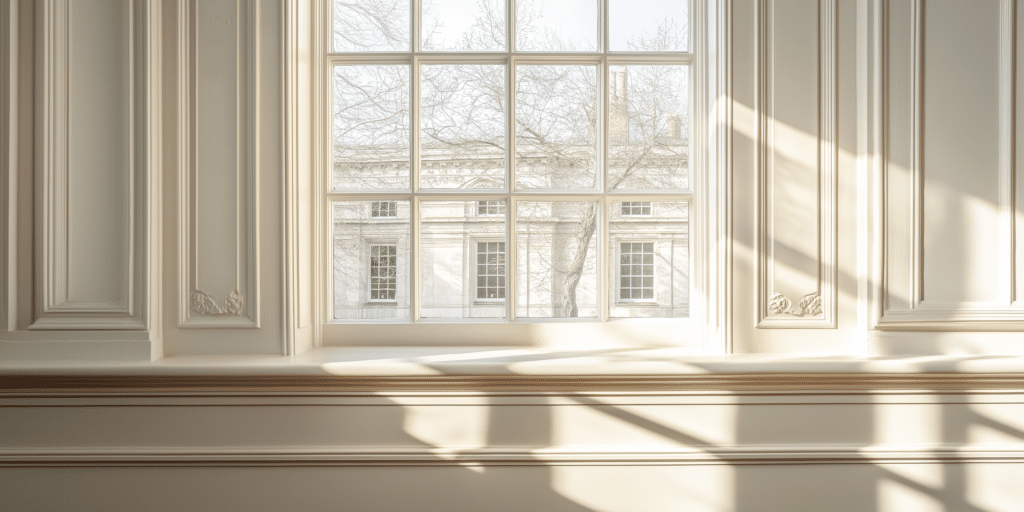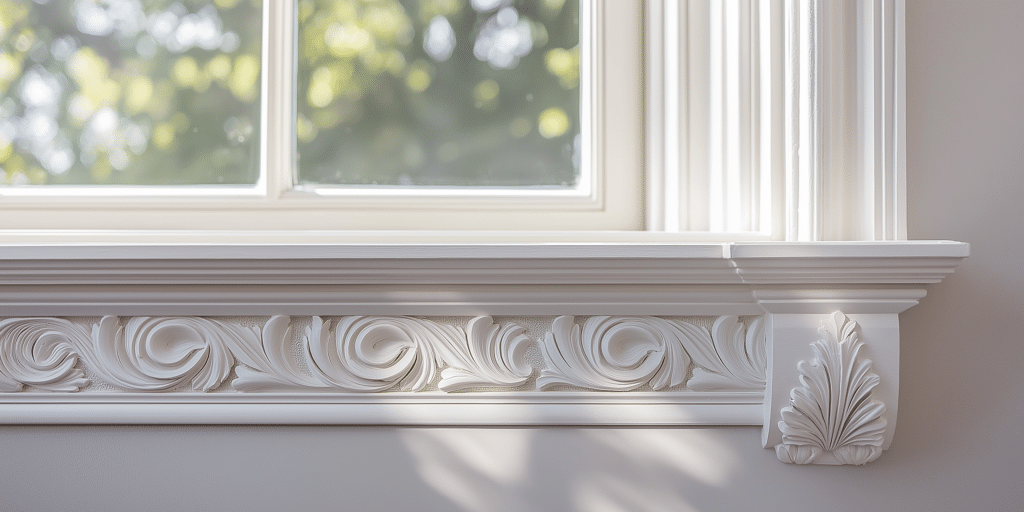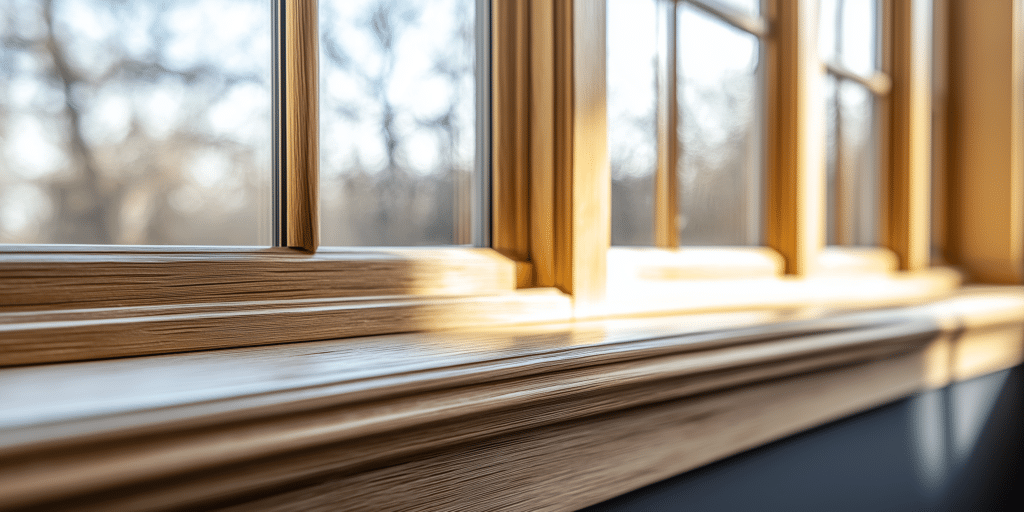Historical Significance of Lamb’s Tongue in Sash Windows

Lamb’s Tongue moulding, characterised by its smooth, curved profile that tapers to a subtle point, adds a touch of refinement to sash windows. It is often favoured in traditional designs for its ability to enhance the visual appeal of the window frame without overwhelming the overall design. Lamb’s Tongue moulding, with its elegant and refined profile, is often chosen for its ability to blend seamlessly with traditional sash windows while offering a distinct aesthetic upgrade. Understanding the importance of Lamb’s Tongue moulding in sash windows is crucial for anyone involved in restoration, conservation, or even modern window design.
Lamb’s Tongue moulding has a rich history deeply intertwined with the evolution of architectural design. Its origins can be traced back to the 17th and 18th centuries when it became a popular choice in Georgian and Victorian architecture. During this time, attention to detail in woodworking was paramount, and Lamb’s Tongue was prized for its elegance and subtlety.
The moulding’s popularity grew as it was adopted by craftsmen who appreciated its ability to add depth and character to window frames without detracting from the overall design. In the context of heritage buildings, the preservation of Lamb’s Tongue moulding is often seen as a testament to the original craftsmanship and design intent. Retaining the original Lamb’s Tongue moulding in conservation areas is vital for maintaining the historical integrity of period properties, making it a preferred choice for restoration projects. This historical significance makes it a key feature in the restoration of period properties, where maintaining authenticity is essential.
Materials Used in Crafting Lamb’s Tongue Moulding
The choice of materials in crafting Lamb’s Tongue moulding plays a significant role in both its appearance and durability. Traditionally, hardwoods such as oak, mahogany, and pine were commonly used due to their workability and ability to hold intricate details. These materials provide a robust foundation that ensures the longevity of the moulding, even in the face of environmental challenges.
In modern applications, there is a growing trend towards using sustainable materials. Engineered wood and composite materials have become popular alternatives, offering similar aesthetic qualities with improved resistance to decay and warping. Lamb’s Tongue moulding adds a touch of sophistication to any sash window, elevating both the interior and exterior appearance of heritage homes. These modern materials also allow for easier customisation, enabling architects and builders to tailor the look of Lamb’s Tongue moulding to suit contemporary designs.
The Craftsmanship Behind Lamb’s Tongue Moulding
Crafting Lamb’s Tongue moulding is an art that requires precision and skill. The process begins with selecting the right type of wood, followed by careful measurement and marking to ensure that the moulding fits perfectly within the sash window frame. Traditional tools such as chisels, moulding planes, and carving knives are often used to shape the delicate profile of the Lamb’s Tongue.
The craftsmanship involved in creating this moulding is a blend of technique and artistry. Each curve and taper must be executed with exactness to achieve the desired effect. Over time, the techniques have evolved, incorporating modern tools and machinery that allow for greater consistency and efficiency in production. The commitment to historic preservation is reflected in the meticulous crafting of Lamb’s Tongue profiles, which are designed to replicate the elegance of period architecture while meeting modern standards. However, the essence of the craftsmanship remains rooted in the tradition of fine woodworking.
Installation of Lamb’s Tongue Moulding in Sash Windows

Installing Lamb’s Tongue moulding in sash windows requires a careful and methodical approach. The process begins with preparing the window frame, ensuring that all surfaces are clean and smooth to allow for a secure fit. Next, the moulding is carefully aligned and attached using nails or adhesive, depending on the specific requirements of the window.
The precision of the installation is critical, as any misalignment can detract from the overall appearance and functionality of the sash window. Choosing the right moulding, such as Lamb’s Tongue, not only enhances the visual appeal of sash windows but also contributes to their overall structural integrity, especially in older buildings. For restorations, special care must be taken to match the new moulding with existing woodwork, preserving the historical integrity of the window. The final step involves sealing and finishing the moulding to protect it from moisture and other environmental factors, ensuring its longevity.
Comparing Lamb’s Tongue with Other Moulding Profiles
Lamb’s Tongue is one of several moulding profiles used in sash windows, each offering unique aesthetic and functional qualities. For instance, Ovolo moulding, which features a convex profile, is another popular choice that provides a different visual effect. Bevel moulding, with its sharp angles, offers a more modern look but lacks the subtlety of Lamb’s Tongue.
The choice between these profiles often comes down to the architectural style of the building and personal preference. Lamb’s Tongue is particularly suited to period properties, where its refined curves complement the traditional design. Incorporating Lamb’s Tongue into modern sash window designs allows for a fusion of traditional aesthetics with contemporary functionality, appealing to a wide range of architectural styles. In contrast, Ovolo or Bevel mouldings might be chosen for more contemporary or minimalist projects. Understanding these differences helps in making informed decisions when restoring or designing sash windows.
Maintenance and Restoration of Lamb’s Tongue Moulding
Maintaining Lamb’s Tongue moulding is essential for preserving the appearance and functionality of sash windows. Regular cleaning and inspection can help identify issues such as wood decay, warping, or damage caused by environmental factors. When damage is detected, prompt repair or restoration is necessary to prevent further deterioration.
Restoration of Lamb’s Tongue moulding often involves carefully removing the damaged section and replacing it with a new piece that matches the original profile. While Lamb’s Tongue moulding is beautiful, it requires careful maintenance to preserve its intricate details, especially in harsh weather conditions. In some cases, it may be possible to repair the moulding in situ, using wood fillers or other restoration materials. For period properties, it’s crucial to use materials and techniques that align with the original construction, maintaining the window’s historical authenticity.
Customising Lamb’s Tongue Moulding for Modern Applications

While Lamb’s Tongue moulding is traditionally associated with period properties, it can also be adapted for use in modern architectural designs. Customisation options include varying the size and depth of the moulding to suit contemporary aesthetics or using alternative materials that offer enhanced durability or environmental benefits.
In modern applications, Lamb’s Tongue can be used to add a touch of classic elegance to new builds, bridging the gap between traditional and contemporary design. Architects and designers may also experiment with combining Lamb’s Tongue with other moulding profiles, creating a unique hybrid that meets specific design requirements. Incorporating Lamb’s Tongue into modern sash window designs allows for a fusion of traditional aesthetics with contemporary functionality, appealing to a wide range of architectural styles.
Expert Opinions on Lamb’s Tongue Moulding
Experts in architecture and historic preservation often highlight the importance of Lamb’s Tongue moulding in maintaining the character and authenticity of period properties. According to preservationists, Lamb’s Tongue is not just a decorative element but a crucial feature that reflects the craftsmanship and design ethos of its time. Retaining the original Lamb’s Tongue moulding in conservation areas is vital for maintaining the historical integrity of period properties, making it a preferred choice for restoration projects.
Modern architects also value Lamb’s Tongue for its versatility, noting that it can be adapted to suit a wide range of styles and materials. Case studies from restoration projects often showcase how Lamb’s Tongue moulding has been successfully integrated into both historical restorations and new builds, demonstrating its enduring appeal.
Common Misconceptions About Lamb’s Tongue Moulding
There are several misconceptions about Lamb’s Tongue moulding that can lead to its improper use or undervaluation. One common myth is that Lamb’s Tongue is purely decorative, with no functional benefits. In reality, this moulding adds structural integrity and helps protect the window frame from weathering.
Another misconception is that Lamb’s Tongue is difficult to maintain or restore. While it does require regular care, proper maintenance is straightforward and can significantly extend the moulding’s lifespan. While Lamb’s Tongue moulding is beautiful, it requires careful maintenance to preserve its intricate details, especially in harsh weather conditions. Addressing these misconceptions is important for ensuring that Lamb’s Tongue moulding is used and preserved correctly in both restoration and new construction projects.
The Enduring Appeal of Lamb’s Tongue in Sash Windows

Lamb’s Tongue moulding continues to be a popular choice in both historical restorations and modern architectural designs, thanks to its elegant profile and functional benefits. Its ability to enhance the visual appeal of sash windows while contributing to their structural integrity makes it a valuable feature in any window design.
The enduring popularity of Lamb’s Tongue moulding is a testament to its perfect blend of form and function, making it an essential component in preserving the aesthetic and structural integrity of sash windows.
As architectural trends evolve, the timeless quality of Lamb’s Tongue ensures its place in both traditional and contemporary settings. Homeowners and builders alike can appreciate the craftsmanship and attention to detail that Lamb’s Tongue moulding represents, ensuring that this classic design element remains relevant for future generations.




